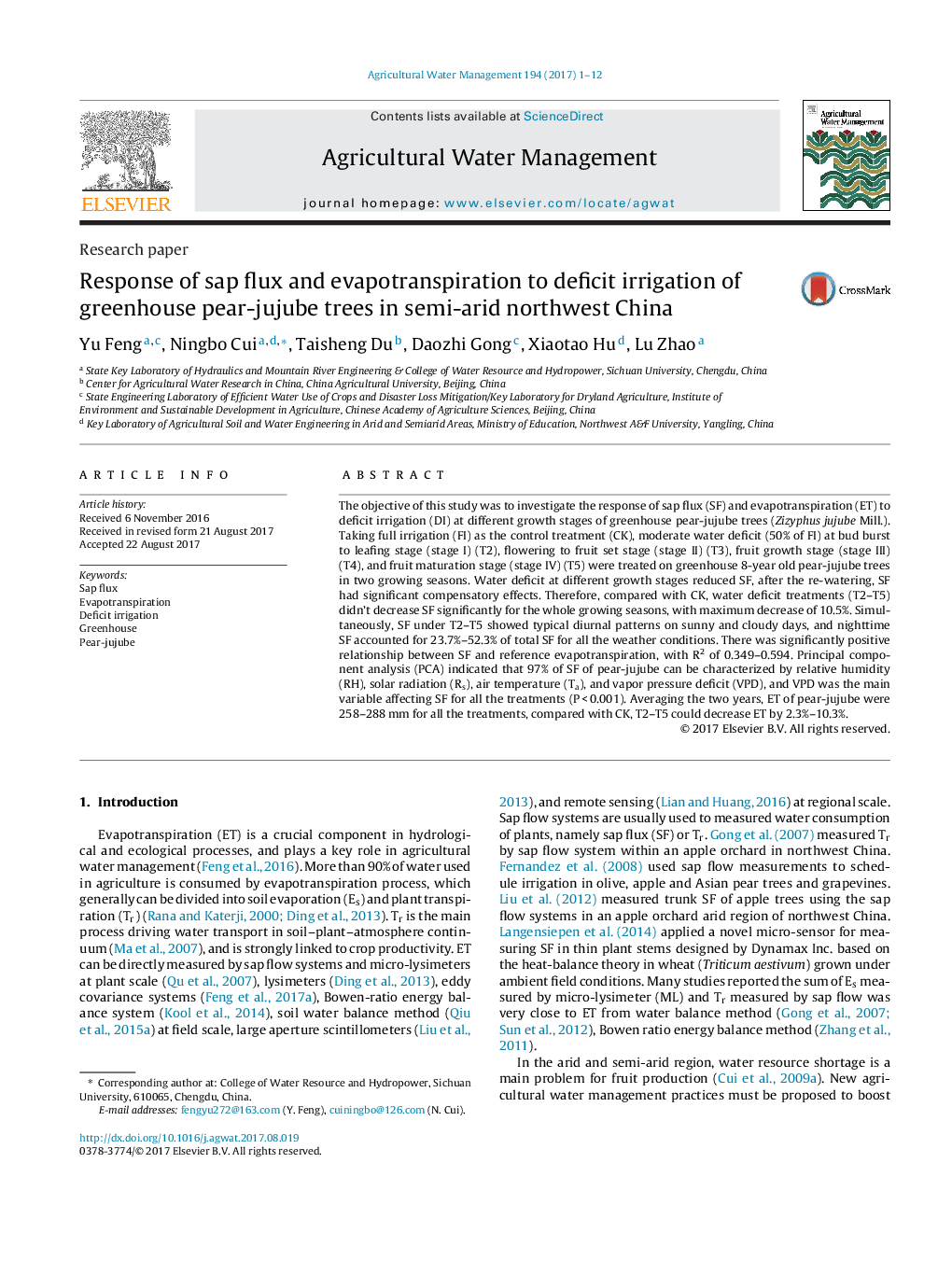| Article ID | Journal | Published Year | Pages | File Type |
|---|---|---|---|---|
| 5758463 | Agricultural Water Management | 2017 | 12 Pages |
Abstract
The objective of this study was to investigate the response of sap flux (SF) and evapotranspiration (ET) to deficit irrigation (DI) at different growth stages of greenhouse pear-jujube trees (Zizyphus jujube Mill.). Taking full irrigation (FI) as the control treatment (CK), moderate water deficit (50% of FI) at bud burst to leafing stage (stage I) (T2), flowering to fruit set stage (stage II) (T3), fruit growth stage (stage III) (T4), and fruit maturation stage (stage IV) (T5) were treated on greenhouse 8-year old pear-jujube trees in two growing seasons. Water deficit at different growth stages reduced SF, after the re-watering, SF had significant compensatory effects. Therefore, compared with CK, water deficit treatments (T2-T5) didn't decrease SF significantly for the whole growing seasons, with maximum decrease of 10.5%. Simultaneously, SF under T2-T5 showed typical diurnal patterns on sunny and cloudy days, and nighttime SF accounted for 23.7%-52.3% of total SF for all the weather conditions. There was significantly positive relationship between SF and reference evapotranspiration, with R2 of 0.349-0.594. Principal component analysis (PCA) indicated that 97% of SF of pear-jujube can be characterized by relative humidity (RH), solar radiation (Rs), air temperature (Ta), and vapor pressure deficit (VPD), and VPD was the main variable affecting SF for all the treatments (PÂ <Â 0.001). Averaging the two years, ET of pear-jujube were 258-288Â mm for all the treatments, compared with CK, T2-T5 could decrease ET by 2.3%-10.3%.
Related Topics
Life Sciences
Agricultural and Biological Sciences
Agronomy and Crop Science
Authors
Yu Feng, Ningbo Cui, Taisheng Du, Daozhi Gong, Xiaotao Hu, Lu Zhao,
